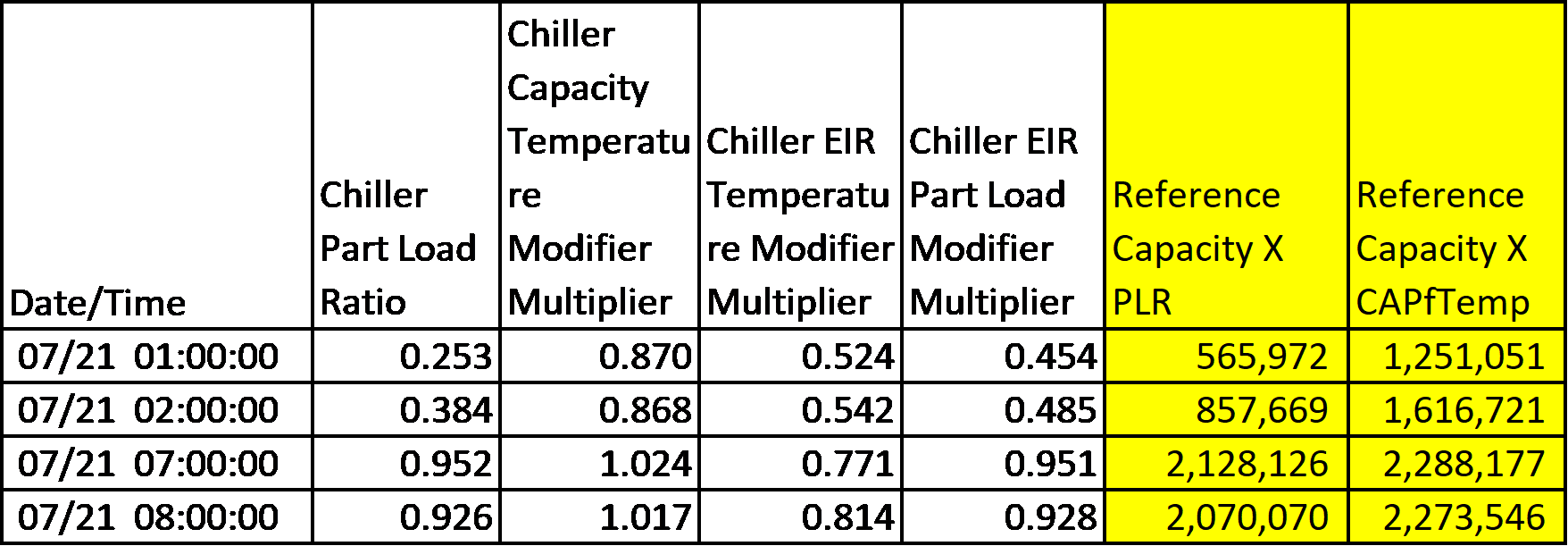Calculating Power, Capacity, and COP from Chiller Curves
I've seen a few posts related to this subject (here, and here), but I'm still struggling with it. In trying to better understand chiller curves, I've been trying to calculate the hourly power, capacity and COP of chillers based on the resulting curve ratios (or 'modifier multipliers').
In EnergyPlus, I am using the large office reference building for Chicago ("RefBldgLargeOfficeNew2004_Chicago") from the EnergyPlus v8.6 example files. From this I output chiller part load ratio, chiller cycling ratio, chiller electric power, chiller COP, chiller capacity temperature modifier multiplier, chiller EIR temperature modifier multiplier, and chiller EIR part load modifier multiplier.
The COP is 5.5, capacity is auto-sized but the html report shows a capacity of 2,235,557.61 W.
The chiller object is Chiller:Electric:ReformulatedEIR. The engineering reference manual says that the equation for power should be

Here is a snippet of the data:

Questions
- How do I calculate available capacity for each hour? I would think that it would be the reference capacity times the part load ratio, OR the reference capacity times the
chiller capacity temperature modifier multiplierbut both of these methods give different results.

- Why when I use the above power equation does it not equal the
chiller electric power [W]as output by EnergyPlus? Note that neither of the methods for #1 for calculating capacity make the result of the power equation line up.

- What equation would I use to calculate hourly COP or EIR based on the modifier multipliers?





